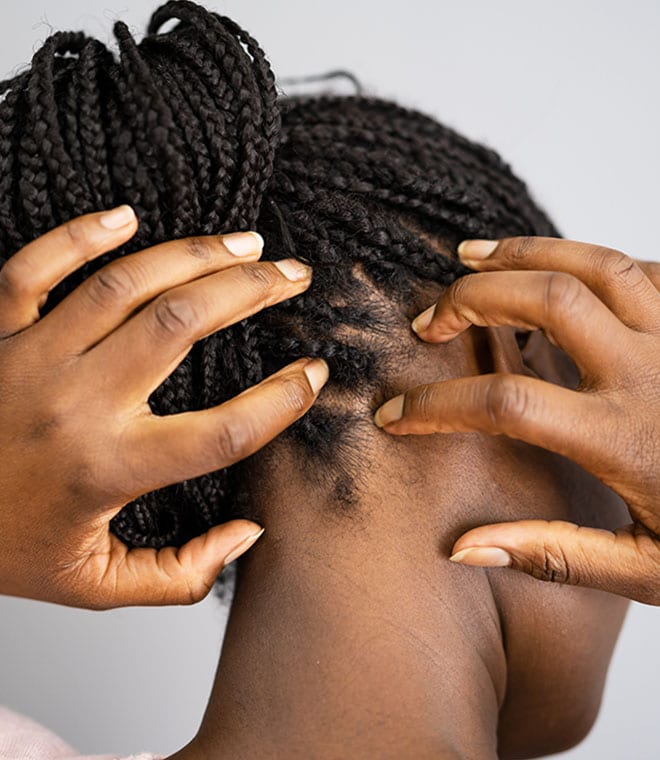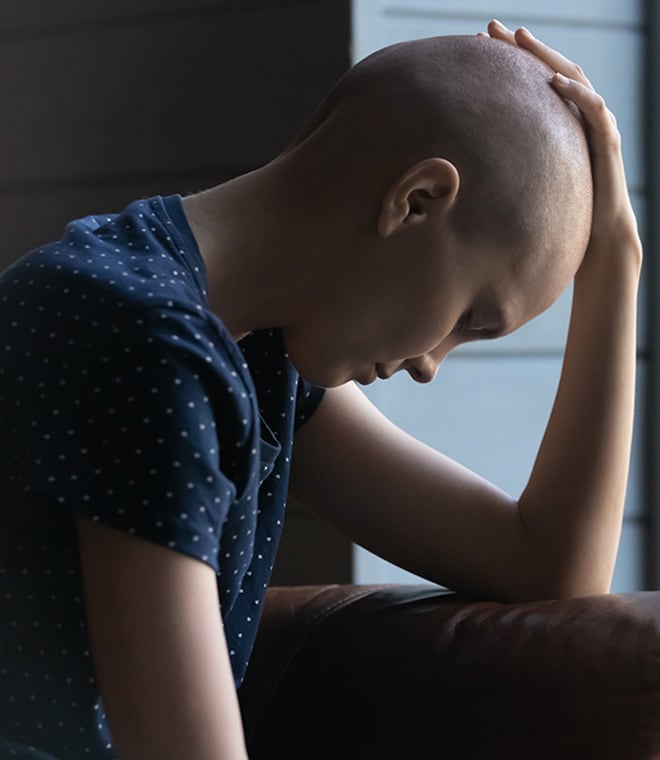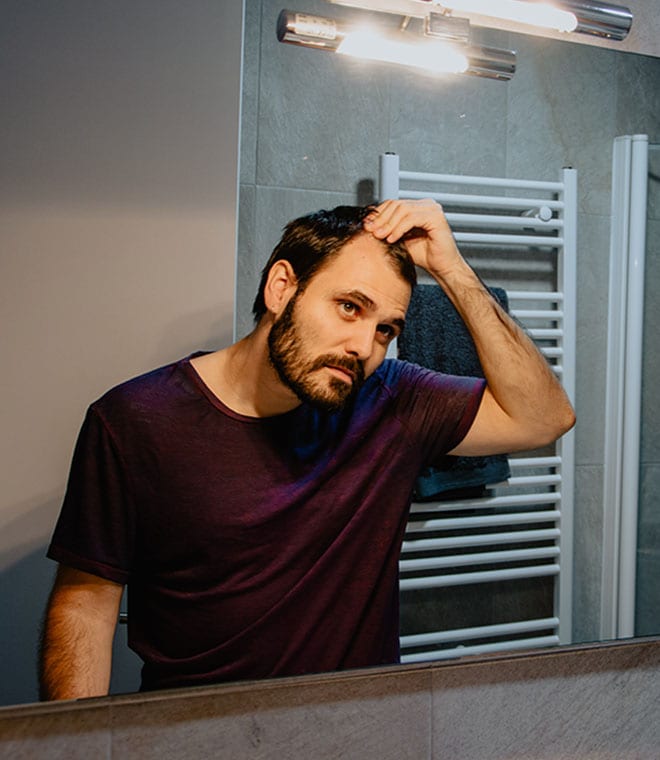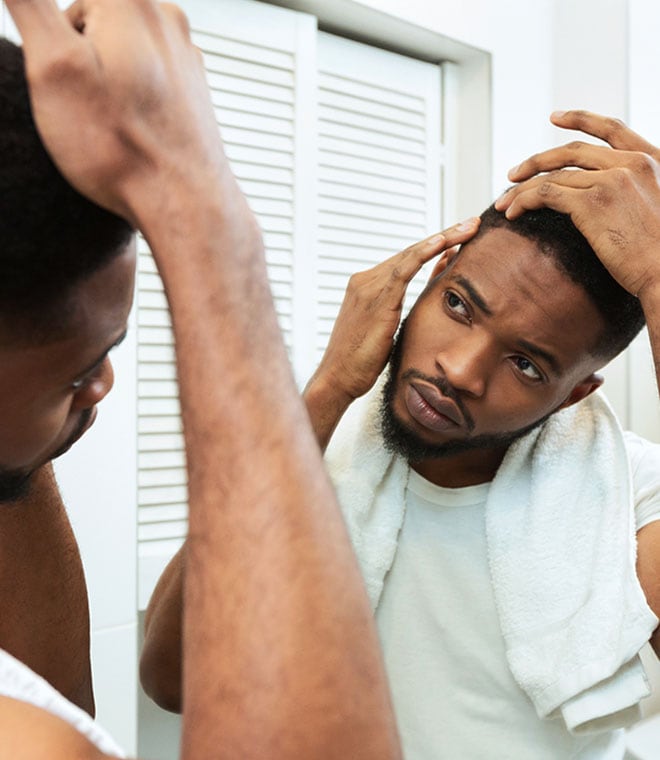Health
What causes balding in the back of the head?
By Anna H. Chacon, MD, Fellow of the American Academy of Dermatology Jan 28, 2025 • 6 min
People may be alarmed when they realize they’re developing a bald spot on the back of their head. Whether you're experiencing gradually thinning hair or hair loss at a fast pace, you want to get to the bottom of your symptoms as quickly as possible. Although you’ll need an expert diagnosis from a healthcare provider to possibly identify the cause of a bald spot, understanding the potential causes may help you explore options.
Male pattern baldness
A bald area on the back of the head may indicate that you have male pattern baldness, the leading cause of hair loss in men. Also called androgenic alopecia, the condition is often hereditary and is due to changes in levels of sex hormones that occur with age. About 80% of all men experience some degree of hair loss as they age.
Male pattern baldness usually begins along the hairline and temples and then progresses to a thinning crown, eventually creating a bald area on the back of the head. Treatment for male pattern baldness usually involves applying topical medications to slow the progression of hair loss and support regrowth. Healthcare providers may also prescribe oral medications.
Women can also develop a form of hereditary hair loss, but it usually involves widespread thinning all over the head.
Alopecia areata
Patchy hair loss anywhere along the scalp, including the back of the head, may be caused by alopecia areata. This type of hair loss stems from problems with the immune system that cause it to attack healthy hair follicles. As a result, hair follicles become inflamed and shed hairs.
Most often, people with alopecia areata experience small, round patches of hair loss that appear randomly distributed rather than only a balding crown.
For many people, alopecia areata is cyclical, with flare-ups that occur during the cold months of the year. Periods of hair loss are usually followed by regrowth in the affected area. Depending on the severity of hair loss, healthcare providers may administer injections or prescribe topical or oral medications that suppress the immune system and fight inflammation to treat alopecia areata.
Ringworm
A condition called ringworm of the scalp may cause thinning or balding spots on the scalp. Although the name may sound like a parasite, ringworm is actually a type of fungus. When the fungal infection occurs on the scalp, healthcare providers call it tinea capitis.
Ringworm can cause itchy skin and a ring-shaped rash. The skin irritation may lead to a round bald patch in the affected area. Normally, the treatment for ringworm of the scalp is an oral antifungal medication that fights the infection. Once the infection has cleared, hair usually grows back.
Telogen effluvium
Another potential cause of a thinning crown is telogen effluvium. Normally, this type of hair loss is caused by a physical or psychological trigger. People may experience telogen effluvium after:
- Post-pregnancy hormonal changes
- Undergoing surgery
- Experiencing severe stress
- Suffering from severe infections or chronic illnesses
- Following extremely calorie-restrictive diets
Although we don't fully understand why, these events may trigger a change in hair growth cycles. Every hair on your head naturally goes through an active growth phase, a transition phase and a dormant phase. At the end of the dormant period, the hair falls out and the cycle begins with new hair. Hairs in the dormant phase are known as telogens.
When telogen effluvium occurs, the body begins to shed existing telogens, and hairs in the active phase of growth shift into the dormant phase more quickly. As a result, the normal shedding process accelerates. Most people experience telogen effluvium all over their heads. However, it is possible for hair loss to be more noticeably thin in some spots. For most people, telogen effluvium stops on its own within a few months, and hair usually begins to grow again.
Because there are many potential causes of hair loss on the back of the head, it’s best to schedule an appointment with your healthcare provider, who can conduct an examination and order diagnostic testing to determine the cause of thinning hair or a bald spot. Your healthcare provider can then recommend treatments, such as topical scalp treatments, oral medications or dietary supplements.
Updated by Julie McDaniel, MSN, RN, CRNI, January 2025.
Sources:
- https://medlineplus.gov/ency/article/003246.htm
- https://www.aad.org/public/diseases/hair-loss/treatment/diagnosis-treat
- https://www.aad.org/public/diseases/hair-loss/treatment/tips
- https://www.aocd.org/page/telogeneffluviumha
- https://www.aad.org/public/diseases/hair-loss/types/alopecia/symptoms
- https://www.aad.org/public/diseases/hair-loss/types/alopecia
- https://www.naaf.org/alopecia-areata
- https://www.cdc.gov/ringworm/signs-symptoms/index.html
- https://www.cdc.gov/ringworm/treatment/index.html
- https://medlineplus.gov/genetics/condition/androgenetic-alopecia/#synonyms
- https://www.mayoclinic.org/diseases-conditions/hair-loss/diagnosis-treatment/drc-20372932
- https://www.ncbi.nlm.nih.gov/books/NBK430848/
- https://medlineplus.gov/ency/article/001177.htm
- https://www.niams.nih.gov/health-topics/alopecia-areata




